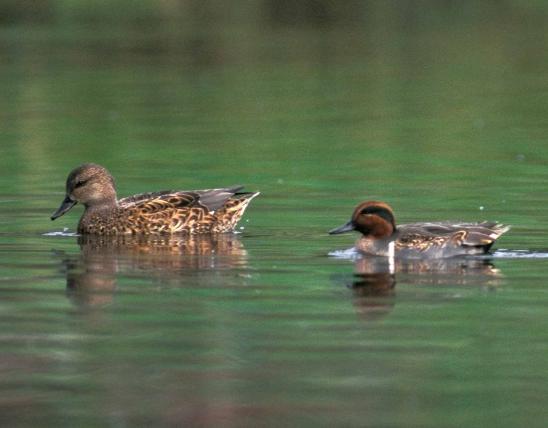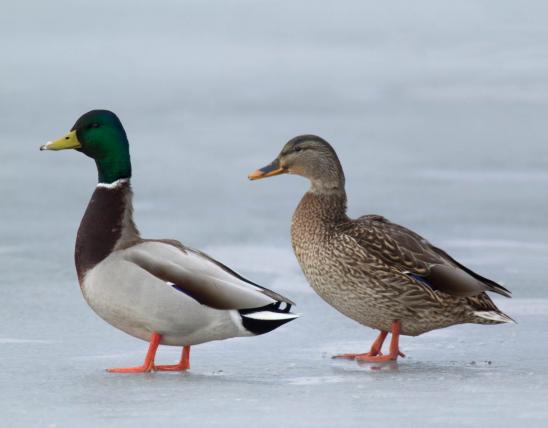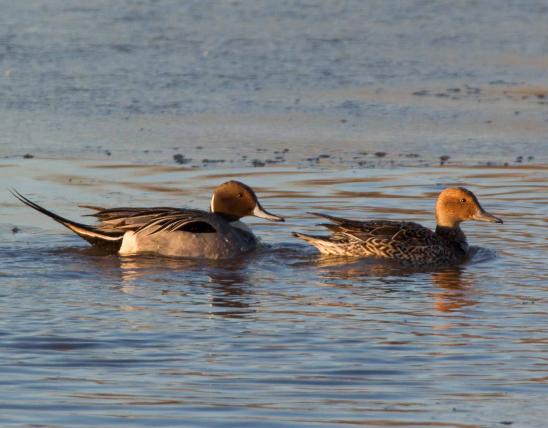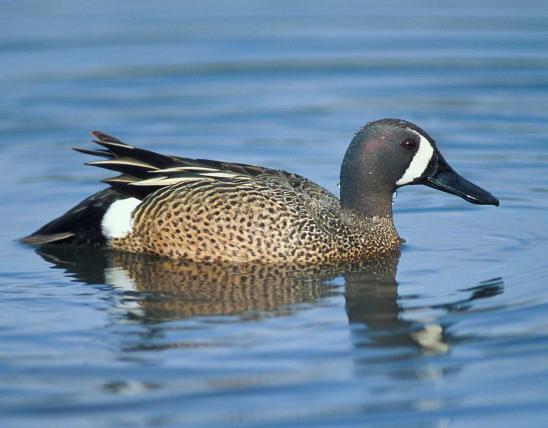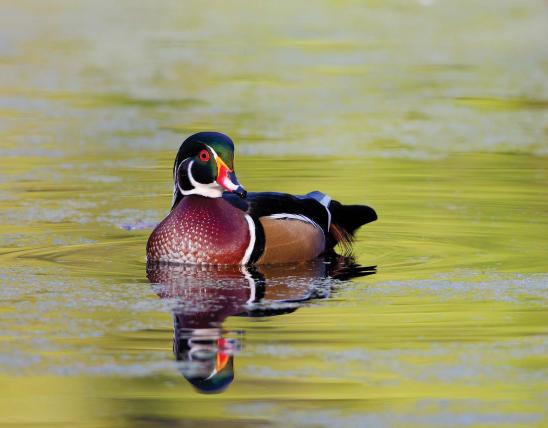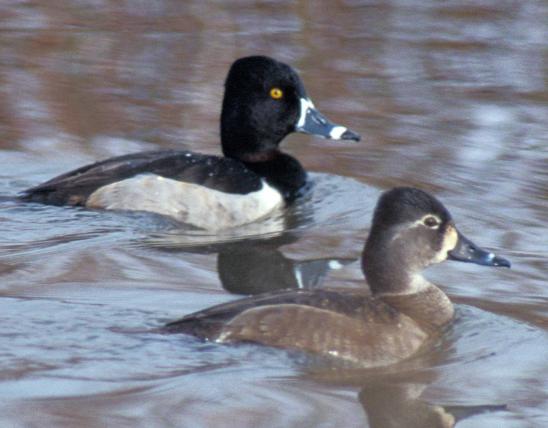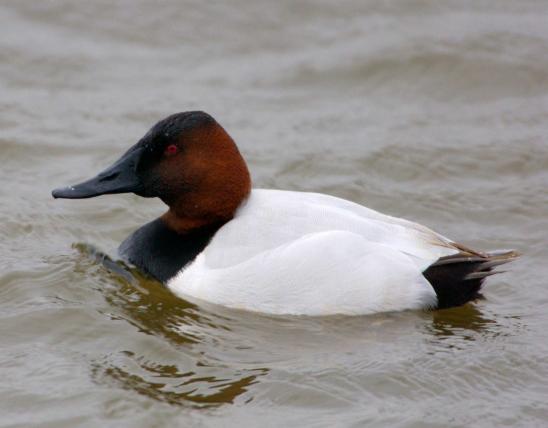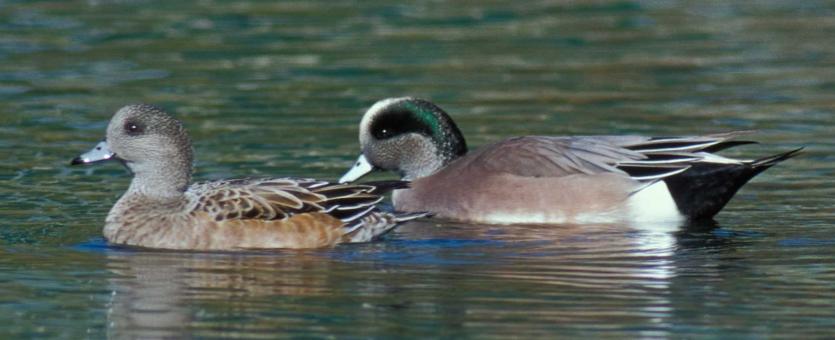
American wigeon is a medium-sized dabbling duck with a relatively small bill. Adult male has a white forehead, a gray head, a green band from the eye down the back of the neck, a grayish back, a rusty brown breast and sides, and in flight a large white patch on the forward edge of the wing. The rear end is black, preceded by white. The female has a gray bill and head, a dark eye spot, rusty sides, and a grayish patch on the wing. Females make low, hoarse quacks; males make an airy two- or three-syllable whistle.
Similar species: The male green-winged teal also has a green stripe running from the eye down the back of the neck, but its head is rusty and lacks the white forehead and crown. It is also a smaller duck.
Length: 20 inches (tip of bill to tip of tail).
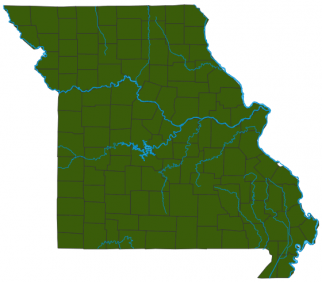
Statewide.
Habitat and Conservation
Usually seen in marshes, ponds, and lakes as they forage in shallow water. Dabblers can take flight by jumping directly from the water into the air. Their wings are large in relation to their body weight, giving them the ability to lift themselves easily right from the surface of the water. They generally don’t dive below the surface; instead, they rock forward to poke their heads under water, tipping up their tails toward the sky.
Food
American wigeon forage on aquatic vegetation and invertebrates near the surface in shallow water. Vegetation is a larger portion of their diet than of any other dabbling duck. American wigeon commonly swim near various types of diving ducks as they forage below and dislodge aquatic plants. The wigeon eat the plants that float to the surface. They sometimes also snatch food from the divers’ bills as they reappear above water. For this, the American wigeon is sometimes called the “poacher.”
Status
Common migrant. Not known to breed in the state. An uncommon winter resident, occurring primarily in southern Missouri. One of the most commonly hunted ducks in the United States. Some people call the American wigeon the “baldpate” (baldhead), for the male’s white cap and forehead.
Life Cycle
A migratory duck seen most commonly in our state in February–April and September–November, and during winter. Very generally speaking, it winters in the central and southern United States and Mexico and breeds in central and western Canada and Alaska. Like most other familiar ducks, it nests on the ground, and the young are precocial — relatively well equipped upon hatching with down feathers and able to walk and swim very soon after hatching.
Human Connections
A popular duck for hunting. Missouri has several wetland areas managed for public waterfowl hunting. Our state and federal hunting regulations, National Wildlife Refuge System, and programs like the federal duck stamp help ensure healthy waterfowl populations.
Ecosystem Connections
American widgeon eat aquatic plants, pruning them in the process. Their eating of aquatic invertebrates serves as a control on the populations of those organisms. Meanwhile, widgeon and their young and eggs are relished by many predators.
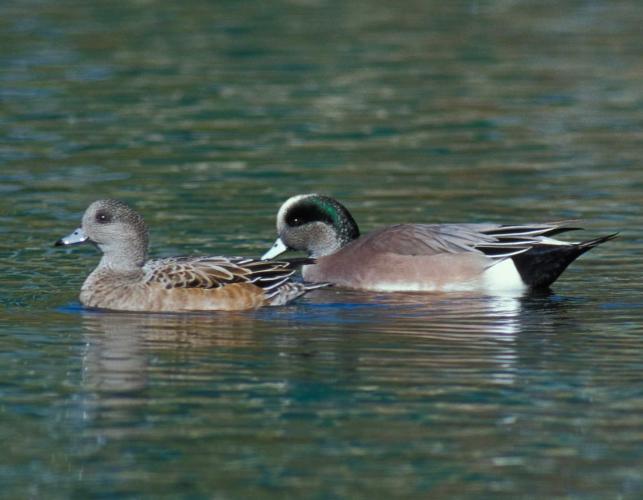
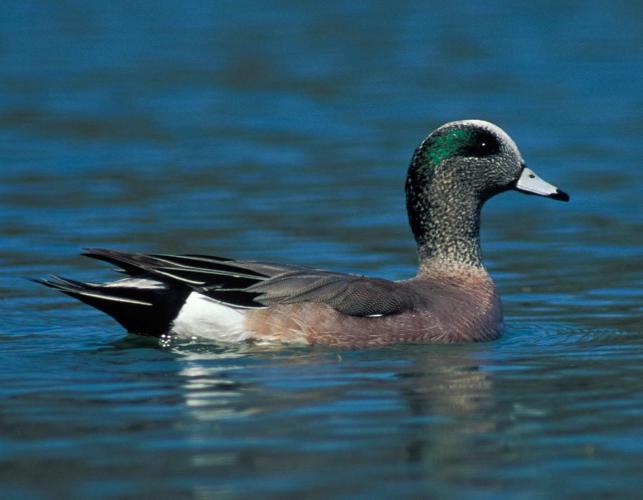
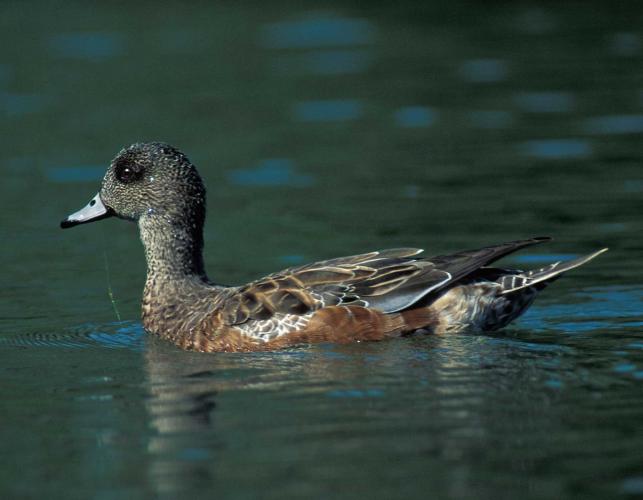
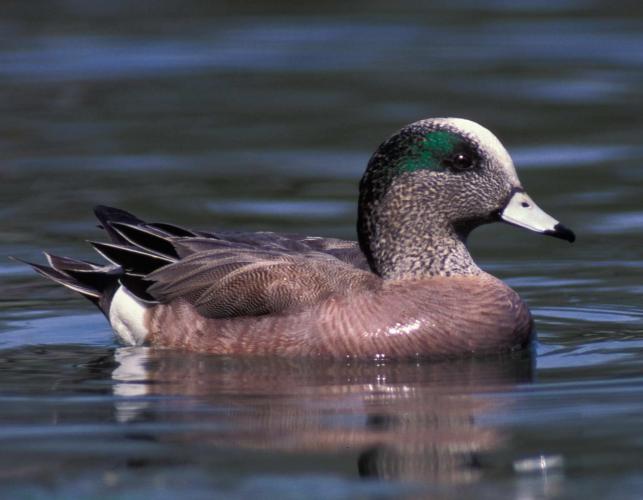
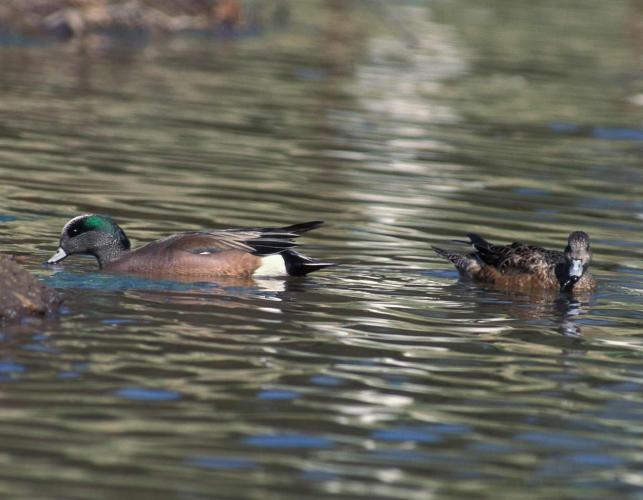
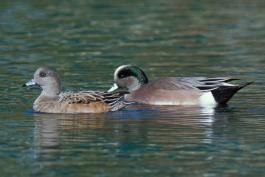
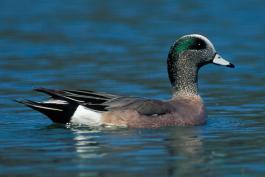
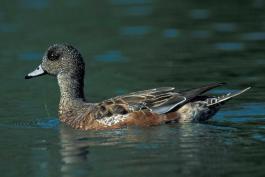
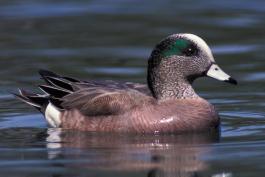
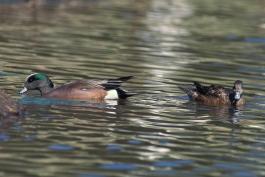
About 350 species of birds are likely to be seen in Missouri, though nearly 400 have been recorded within our borders. Most people know a bird when they see one — it has feathers, wings, and a bill. Birds are warm-blooded, and most species can fly. Many migrate hundreds or thousands of miles. Birds lay hard-shelled eggs (often in a nest), and the parents care for the young. Many communicate with songs and calls.






















